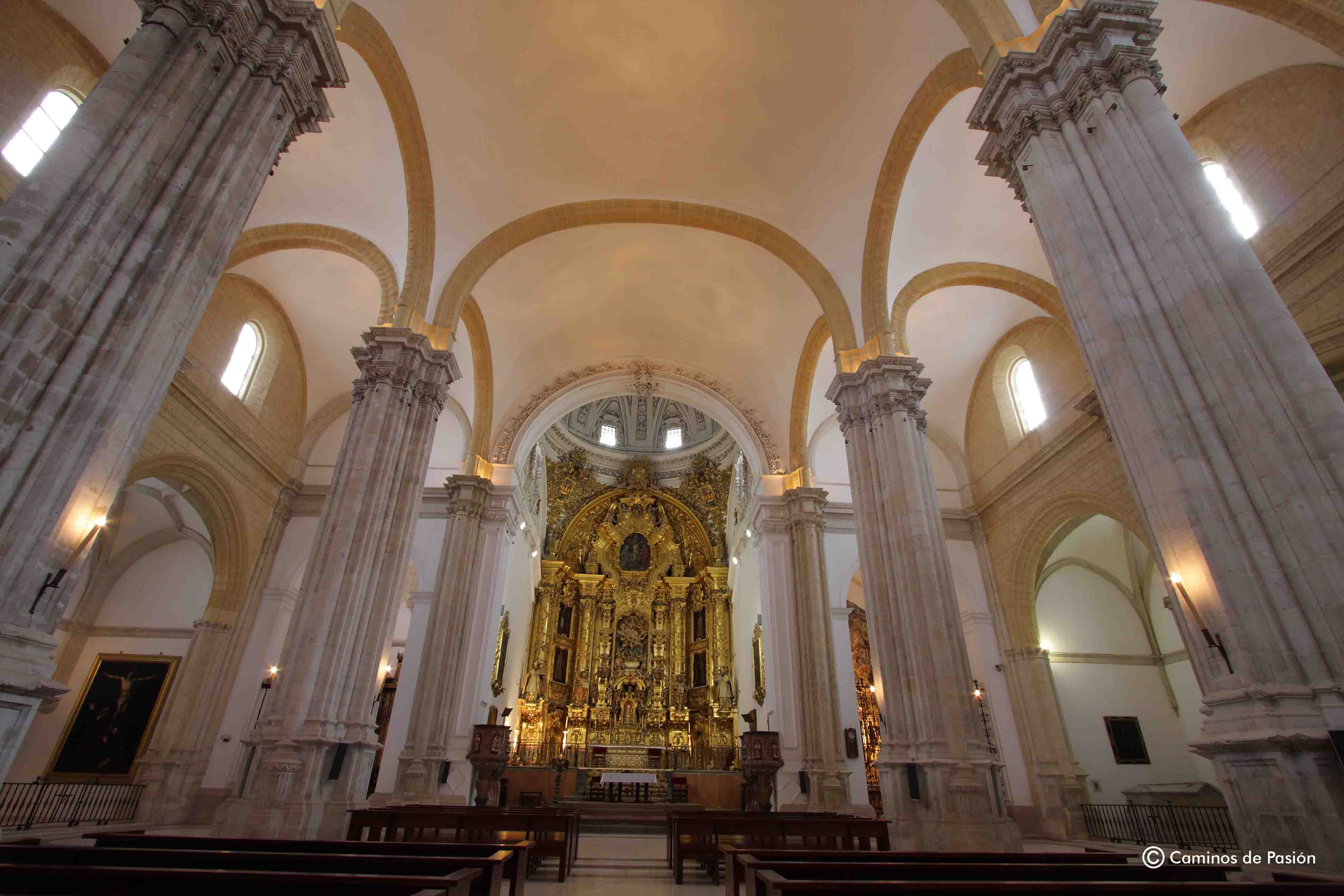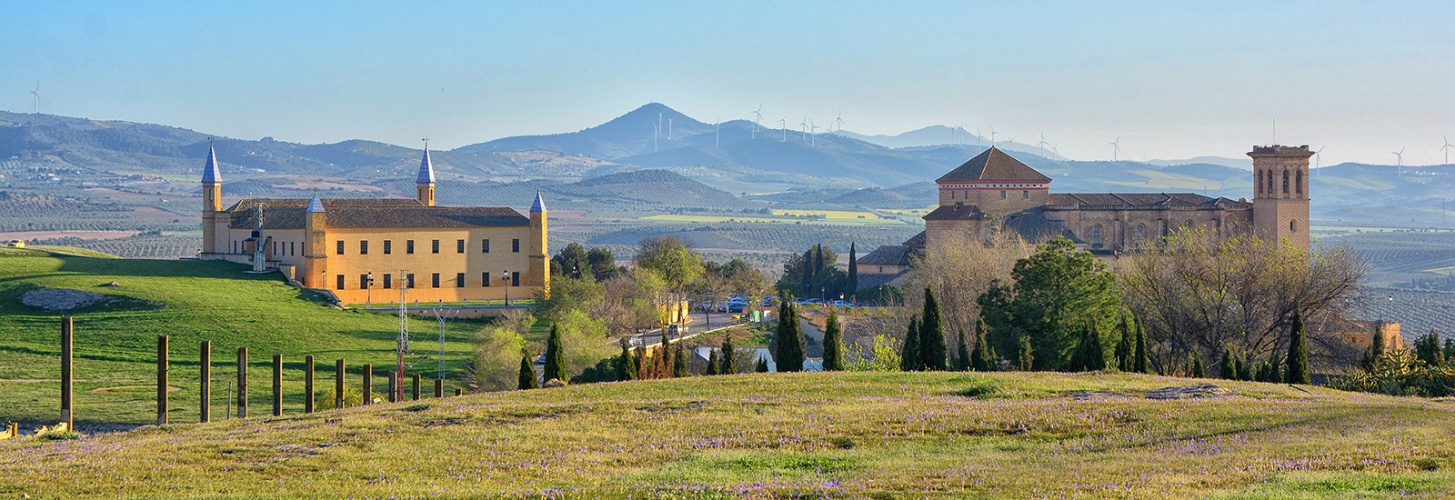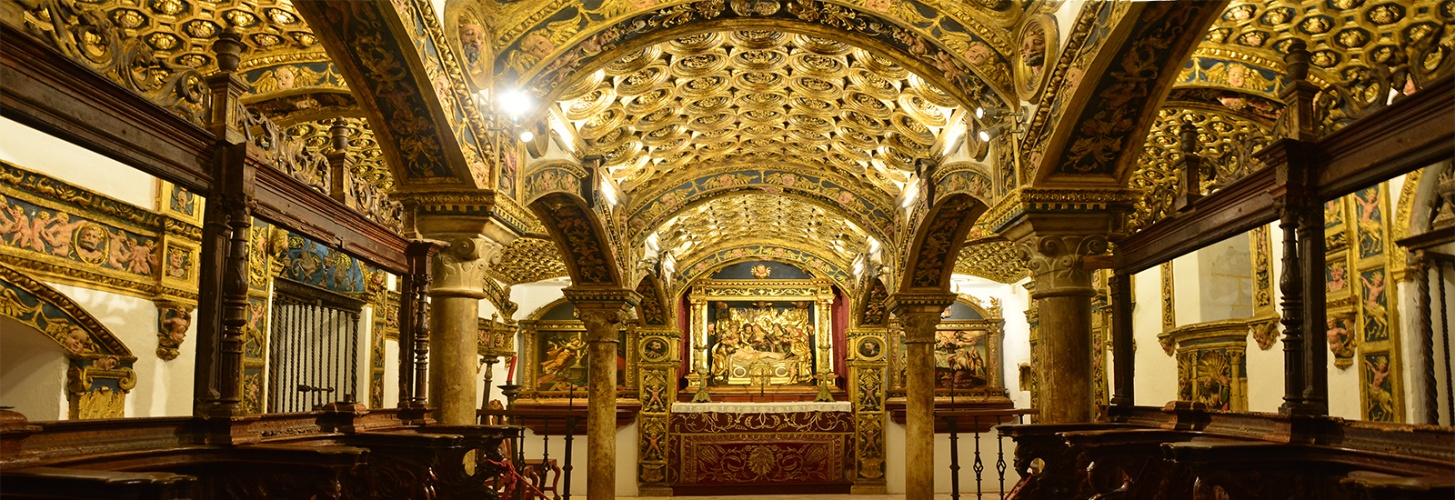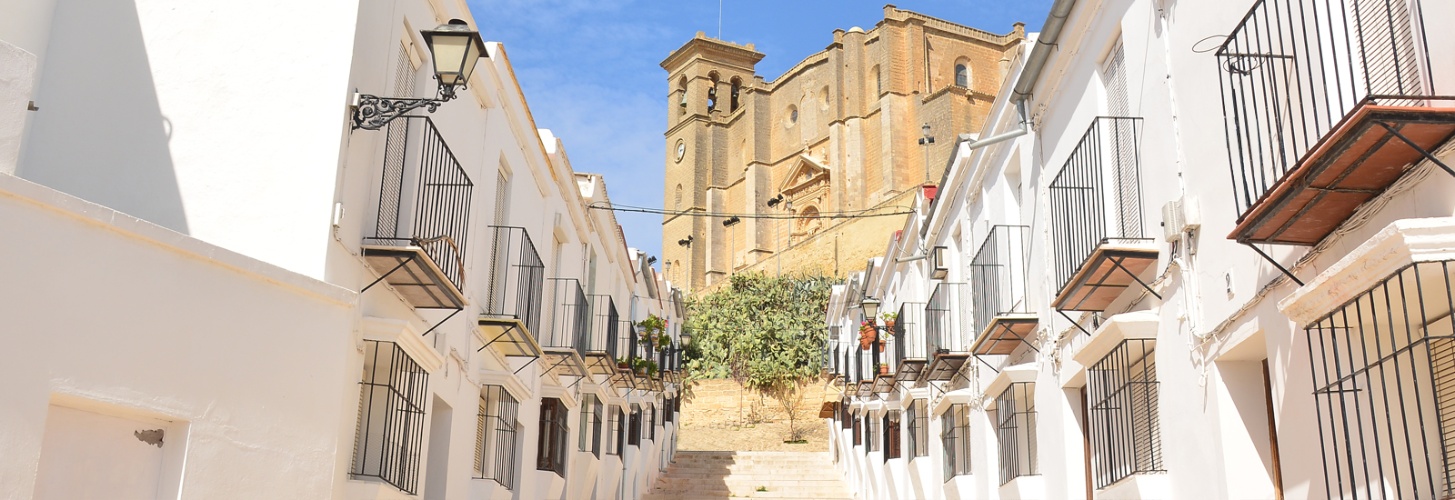Collegiate Church

|
COLEGIATA DE OSUNA |
Winter Timetable (16 Sept – 15 Jun) |
Summer Timetable (16 Jun – 15 Sept) |
|
From Tuesday to Sundays y holidays |
Guided Visits: 10:15 - 11:15 - 12:15 - 13:15 - 16:00 - 17:00 |
Guided Visits: 09:30- 10:15 - 11:15 - 12:15 - 13:15 - 19:00 - 20:00 |
It was founded in 1535 by Mr. Juan Téllez Girón, IV Count of Ureña, after achieving a papal bull in order to be, at the same time, both a Parish Church and a Collegiate; the temple was built in the place that was occupied by the Church of the Castle, totally destroyed by a fire.
Outside the temple surprised by its severity, the church is built with ashlars extracted from the quarries of Osuna. The main façade, located in the west wall, is called Puerta del Sol, where stands the excellent decoration of grotesques, eucharistic symbols, medallions and inscriptions which are distributed by the architectural elements. On the left side of the façade is located the tower, a work from 1918, after the destruction of the previous one by lightning, and which is still unfinished rises.
The interior of the church is rectangular with three naves and nine chapels containing magnificent altarpieces, images and paintings by prominent artists. It highlights the wide presbytery and the Chapel of the Immaculate, whose main ornament is an altar of the Christ of Mercy, which houses a magnificent carving of Christ on the Cross, the work of Juan de Mesa, held in 1623.
The construction of the Pantheon Ducal inside the Collegiate, had to start around 1545, consecrating the chapel 10 years later. It was founded by Don Juan Tellez Giron, and is Plateresque. It is attached to the Collegiate and has three main centers: the Patio of the ducal tomb, the Chapel and the Pantheon.
You can access the museum through a door, also in Plateresque style, held in mid-sixteenth century. Its buildings are the old sacristy and the adjacent rooms.
Inside, it preserves its four halls works of great importance, as the collection of works by José de Ribera "the Españoleto" made in the seventeenth century, and a large set of pieces of jewelry made by important artists between the sixteenth and the nineteenth.



